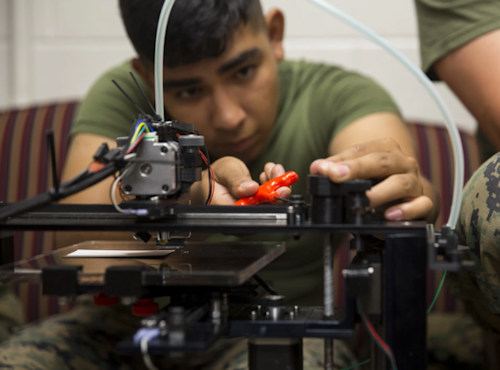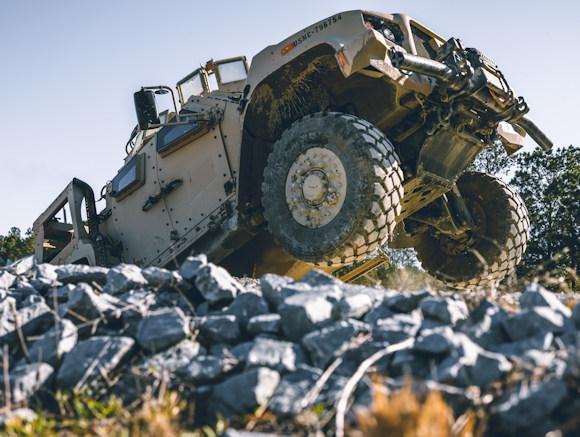The Marine Corps, that is, the United States Marine Infantry, seems to be at the forefront of that practical and technical innovation which, according to the Force Design, the concept of mission and combat will change.
A necessary renewal to keep United States Defense at the top of the world, made possible by the enormous investments in the sector.
Adapt, make do and "achieve" with technology
The Marines' current movements towards the Indo-Pacific region require them to adapt to new logistical challenges on the modern battlefield. The team is responsible for this strategically important sector Advanced Manufacturing Systems (AMS) to study and make new technologies available in the tactical field without neglecting any variant, not even spare parts.
The good result of a mission depends on the logistical organization, as the manual states Installations and Logistics, therefore, to be successful in the field, a structure fully integrated with the objectives of the Force Design, studied and constantly updated thanks to the body's field experience.
Matt Audette, AMS program analyst, is convinced that 3D technology transferred to the war zone will revolutionize the use of the military structure on missions.
Being able to carry out repairs or modifications of materials on the front line represents the central aspect of the use of 3D. The typical waits for sending spare parts are avoided, bypassing the risk of destroying material reserves which would weaken and slow down the entire operational structure. Furthermore, the limited dimensions and the versatility of use of the 3D devices make the body more dynamic and reactive in any combat scenario.

What if a detail is missing?
Robert Davies, head of the AMS team, admits that during missions it can happen that you forget some actually important details and draws a historical parallel with now outdated procedures: "Once upon a time there were two simple choices: bring the parts or order them. Today instead when something breaks, a phone call is made to our technicians who, within a couple of hours, produce the necessary part and send it to the front”.
According to a Marine Corps statement, the encouraging successes of using 3D have made it possible to create tools, masks, training aids and even vehicle parts.
Adaptability
In June 2023, joint efforts between Navy and Marine Corps engineers demonstrated the potential of 3D technology by printing a medical cast during the flight of an Osprey.
A revolution that also allows the creation of spare parts or modifications for vehicles Joint Light Tactical Vehicle.
Matt Audette argues that numerical control printers reflect the technology of allied countries so there is no competition, if anything synergy, optimization and lower costs. In fact, with the battlefield adapted to 3D production, whether the Marines are in the Philippines or Japan, the allies' industrial analogy avoids other supply routes, which are also at risk of interception.
The update of the Force Design it is therefore oriented towards creating smaller, but better connected and therefore more operational formations also in terms of productivity. Furthermore, it is important to underline that this capability is not intended to replace industrial partnerships.
On the subject, Gen. Eric M. Smith, commandant of the Marine Corps, told the Senate Armed Services Committee: “We have to do a lot of creative work to push 3D manufacturing forward, every pound counts when you have to move things across the expanse of the Pacific.”
Photo: US Marine Corps












